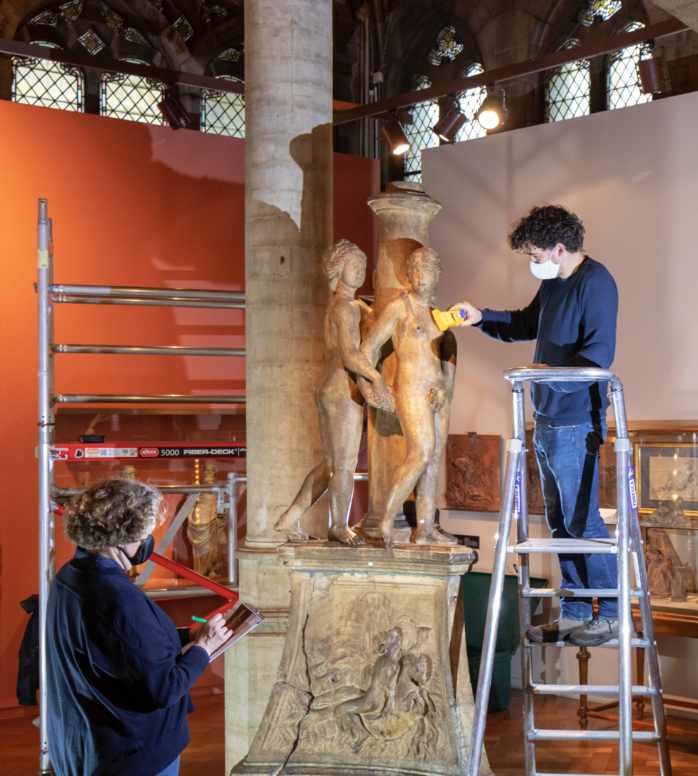The Three Graces, a masterpiece signed Della Porta
This anthropomorphic fountain became part of the collections in 1889. It depicts three naked young women, a very fashionable theme during the Renaissance period. The young women surround a so-called Tuscan column, with a smooth shaft, a base and a rounded capital. It rests on a plinth in the shape of a truncated pyramid.
They are named Aglaea, the symbol of Splendour, Euphrosyne, the symbol of Joy, and Thalia, the symbol of Abundance. Probably the daughters of Jupiter and Eurynome, they evoke the life they live by dancing.
One of the Graces can be seen from behind with her hair braided and tied at her forehead. The other two are leaning casually on the column. Their long, curly hair falls over their shoulders. Framed trapezoidal panels adorn the different sides of the plinth. This bas-relief features mythological scenes associated with water and fertility.
The water used to gush out of five jets in the breasts of two of the Graces and one of the reliefs on the plinth. There is no basin to collect the water which, therefore, flowed directly onto the ground.
To find out more about the work, feel free to consult its inventory sheet.




